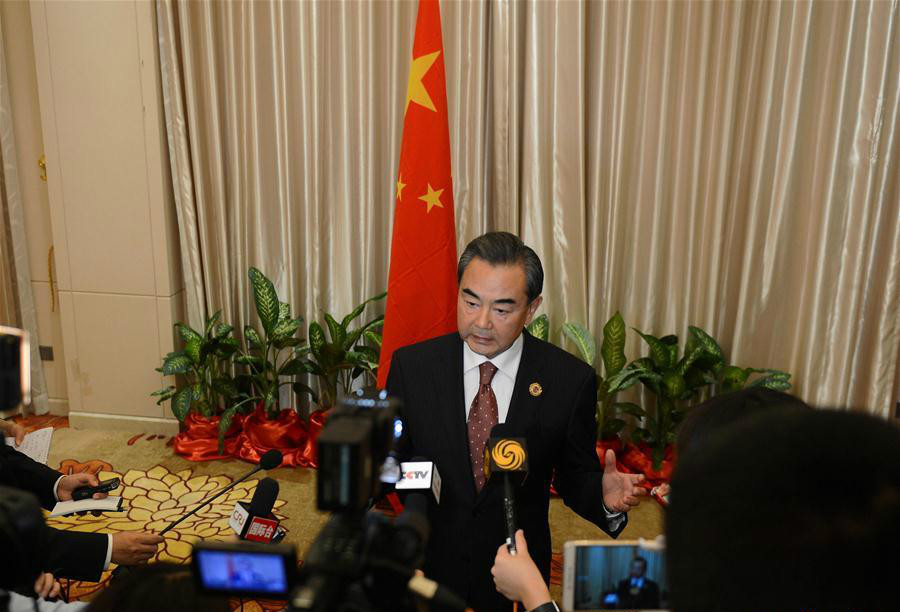China, ASEAN build closer community of common destiny

Chinese Foreign Minister Wang Yi speaks to the press after meetings in Vientiane, capital of Laos, on July 26, 2016. Wang said China and members of the Association of Southeast Asian Nations (ASEAN) have exerted joint efforts to make the ministerial meetings focus on dialogue and cooperation.
A series of meetings between foreign ministers of the ASEAN member countries and other eastern Asian countries concluded in Vientiane, capital of Laos, on July 26.
Over the past five decades, the Association of Southeast Asian Nations (ASEAN) has endured various tests, but the region has now entered an era of peace and stability. Southeast Asia’s economy has continued to grow and people-to-people exchanges are frequent, said Lao Prime Minister Thongloun Sisoulith in his opening remarks at the 49th ASEAN Foreign Ministers Meeting.
Thongloun pointed out that Laos has proposed eight priorities as the major topics of ASEAN Chairmanship 2016, including the implementation of ASEAN Community Vision 2025, narrowing of the development gap, trade facilitation, small and medium-sized enterprises development, tourism development and improving connectivity.
ASEAN should focus on implementing the ASEAN Community Vision 2025 as well as the three community blueprints, Thongloun said, and members will work closely with one another for the next 10 years, contributing to the maintenance and promotion of peace, stability and prosperity in the region and the world, he added.
China and ASEAN will hold a special commemorative summit to celebrate the 25th anniversary of ASEAN-China dialogue relations this year, Saleumxay Kommasith, foreign minister of Laos, said at the closing session and press conference. He said the ASEAN-China relationship has progressed a lot, and cooperation in many fields has expanded. Both sides resolved at the conference to expand cooperation in investment, trade, education, cultural exchanges as well as environmental protection.
State Counsellor and Foreign Minister of Myanmar Aung San Suu Kyi said China is the Myanmar’s largest friendly neighboring country, and she hopes that China, as Myanmar’s good friend, will continue to offer support.
Zheng Yongnian, director of the East Asian Institute at the National University of Singapore, said China always welcomes and supports ASEAN’s integration, rather than a “Monroe Doctrine,” because regional stability is solely dependent upon ASEAN’s efforts, not external forces that are inclined to stir up trouble in the region and then leave.
Chanhsamouth, deputy director of the China Research Center at the National University of Laos, said ASEAN dialogues and partnerships with countries including China have been further deepened, and ASEAN-China cooperation in the fields of political relation, economy and culture continue to be expanded since the establishment of ASEAN Community in late 2015.
The “Belt and Road” initiative creates significant opportunities for Laos and other ASEAN countries, Chanhsamouth said. For example, the construction of China-Laos railway is the first step to improve connectivity between ASEAN and China, which will provide a new source of economic growth for ASEAN member states.

 PRINT
PRINT CLOSE
CLOSE